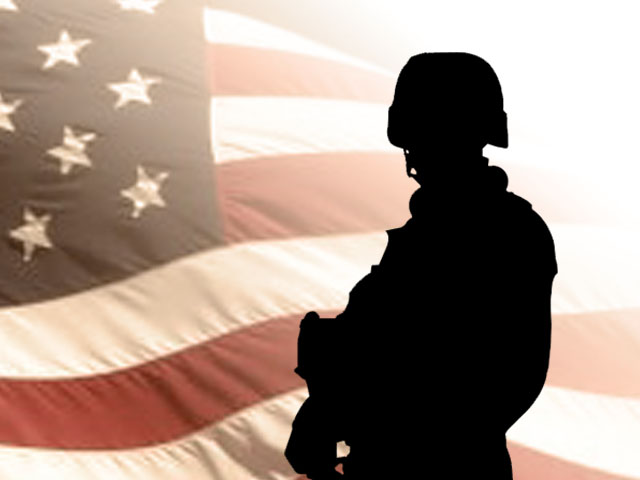
He is the equivalent of a white-suburb kid in the US who turned all emo at some point after finding a group of people he fit in. He was dumber than he realized, loved attention, and no matter how many skulls he'd have around his neck or fingers the guy was probably shit-scared of being killed in the middle of nowhere. Guy must have wanted to keep on living. He'd never "martyr" himself unless it was the last option, and I'm still 100% sure he surrendered on that night thinking surely the US would love to capture him alive. To him, it would have allowed him to hear of protests chanting for his release, left-wing Americans defending him, and what not, and a chance to speak his mind on trial televised to the world like Saddam had the chance to. His eventual execution would have been inevitable, but glorious to his eyes. Getting shot in some empty compound in Pakistan on a cold night was probably not the way he wanted to end his life.
War Dog
There's a reason they brought one to get Osama bin Laden

Dogs have been fighting alongside U.S. soldiers for more than 100 years, seeing combat in the Civil War and World War I. But their service was informal; only in 1942 were canines officially inducted into the U.S. Army. Today, they're a central part of U.S. efforts in Iraq and Afghanistan -- as of early 2010 the U.S. Army had 2,800 active-duty dogs deployed (the largest canine contingent in the world). And these numbers will continue to grow as these dogs become an ever-more-vital military asset.
So it should come as no surprise that among the 79 commandos involved in Operation Neptune Spear that resulted in Osama bin Laden's killing, there was one dog -- the elite of the four-legged variety. And though the dog in question remains an enigma -- another mysterious detail of the still-unfolding narrative of that historic mission -- there should be little reason to speculate about why there was a dog involved: Man's best friend is a pretty fearsome warrior.
Above, a U.S. soldier with the 10th Special Forces Group and his dog leap off the ramp of a CH-47 Chinook helicopter during water training over the Gulf of Mexico as part of exercise Emerald Warrior on March 1.
 Daredevil dogs: The question of how the dog got into bin Laden's compound is no puzzle -- the same way the special ops team did, by being lowered from an MH-60s helicopter.
Daredevil dogs: The question of how the dog got into bin Laden's compound is no puzzle -- the same way the special ops team did, by being lowered from an MH-60s helicopter. In fact, U.S. Air Force dogs have been airborne for decades, though the earliest flying dogs accompanied Soviet forces in the 1930s.
Dogs usually jump in tandem with their trainers, but when properly outfitted with flotation vests they can make short jumps into water on their own. A U.S. Navy SEAL, Mike Forsythe, and his dog, Cara -- pictured above -- recently broke the world record for "highest man/dog parachute deployment" by jumping from 30,100 feet.


In August 2010, The Register, a British online tech publication, reported that "top-secret, super-elite U.S. Navy SEAL special forces are to deploy heavily armoured bulletproof dogs equipped with infrared nightsight cameras and an 'intruder communication system' able to penetrate concrete walls." The article also reported that the U.S. Naval Special Warfare Group had "awarded an $86,000 contract to Canadian firm K9 Storm Inc. for the supply of 'Canine Tactical Assault Vests' for wear by SEAL dogs." The K9 catalogue boasts an array of high-tech canine devices, from storm lights to long lines and leads to an assortment of vests -- assault, aerial insertion, and patrol-SWAT -- which are rated from "excellent" to "good" in protecting the animal from harm due to everything from bullets to ice picks.

 A canine surge: Over the last two years, there has been an effort to rapidly increase the number IED detection dogs in Afghanistan and Iraq. Currently, the Marine Corps has 170 bomb-sniffing dogs, but has plans to deploy as many as 600 dogs to their program before September 2012. In late 2010 the Marines have also awarded a contract to American K-9 Interdiction for "as much as $35 million" to train and kennel their dogs.
A canine surge: Over the last two years, there has been an effort to rapidly increase the number IED detection dogs in Afghanistan and Iraq. Currently, the Marine Corps has 170 bomb-sniffing dogs, but has plans to deploy as many as 600 dogs to their program before September 2012. In late 2010 the Marines have also awarded a contract to American K-9 Interdiction for "as much as $35 million" to train and kennel their dogs.
In February, Marine Commandant Gen. James Amos stated that he'd like to see "a dog with every patrol."
Above, U.S. Marines attached to 1st Battalion, 6th regiment, Charlie Company relax with their bomb-sniffing dogs Books and Good one in Huskers camp on the outskirts of Marjah in central Helmand on Jan. 25, 2010.
More at
http://www.foreignpolicy.com/articles/2 ... 04/war_dog

































